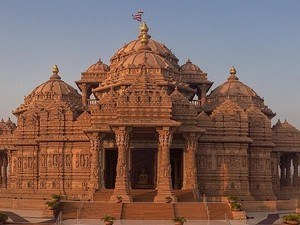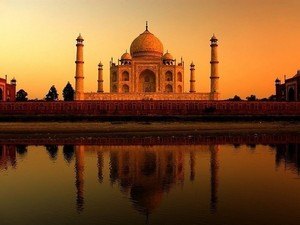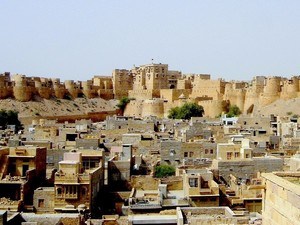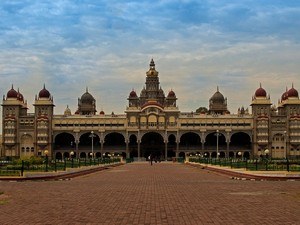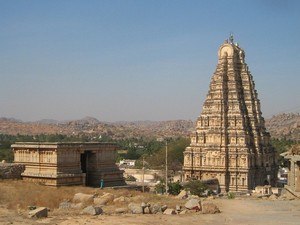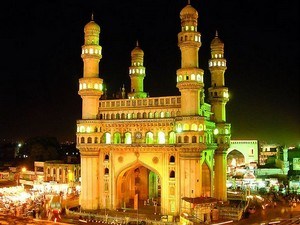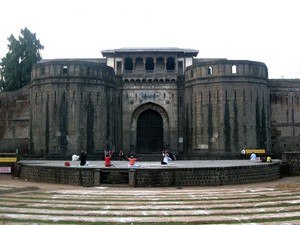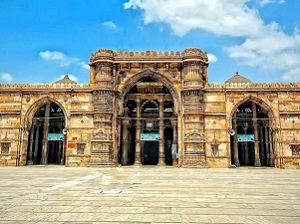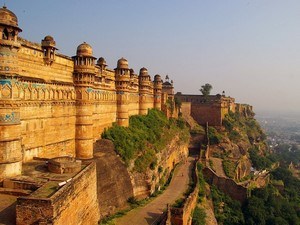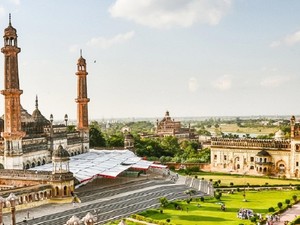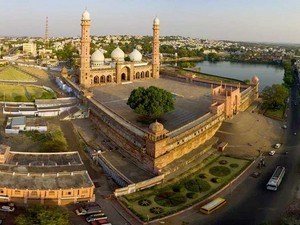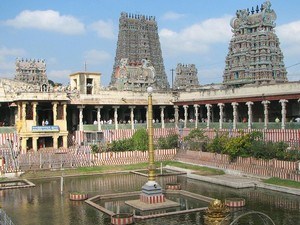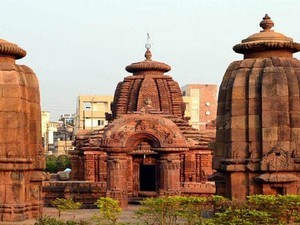1
DAY 1 : UDAIPUR SIGHTSEEING
DAY 1 : UDAIPUR SIGHTSEEING
 Sightseeing
Sightseeing
Leisure / No Sightseeing
At a distance of 3 km from Udaipur City Railway Station, Udaipur City Palace is a beautiful royal palace complex situated on the banks of Lake Pichola in Udaipur city of Rajasthan. This majestic palace is the largest palace complex in India, and among the must include places in Udaipur packages.
The City Palace was built initially by Maharana Udai Singh in 1559 AD when he shifted his capital from the erstwhile Chittorgarh to the newly found city of Udaipur. The Palace was built over nearly 400 years, with contributions from several rulers of the Mewar dynasty.
Among the top Udaipur tourist places, the City Palace boasts of a wonderful blend of Medieval European and Indian architectural styles. Set at an average elevation of 598 m, the Palace has several towers, domes, and arches, which add to the flavor of the heritage site. Courtyards, pavilions, .....
 Duration of visit: 2 Hours
Duration of visit: 2 Hours
 Timings: 9.30 AM to 5.30 PM (last entry 4.30 PM)
Timings: 9.30 AM to 5.30 PM (last entry 4.30 PM)
At a distance of 2.5 km from Udaipur City Railway Station, Pichola Lake is an artificial fresh water lake situated in the heart of Udaipur city in Rajasthan. Surrounded by hills, gardens, temples and havelis, Lake Pichola is one of the most beautiful lakes in India and a popular tourist attraction in Udaipur.
Pichola Lake was built in 1362 AD by Pichhu Banjara, a gypsy Banjara tribesman who transported grain, during the reign of Maharana Lakha. Later, Maharana Udai Singh, impressed by the charm of this lake with the backdrop of green hills, founded the city of Udaipur on the banks of the lake and also enlarged the lake by constructing a stone masonry dam in the Badi Pol region.
Lake Pichola is one of the several contiguous lakes, developed over the last few centuries in and around Udaipur city. Named after nearby Picholi village, Pichola Lake is nearly 4 km long and 3 km wide. The lake has a surface area of about 696 hectares .....
 Duration of visit: 30 Mins - 1 Hr
Duration of visit: 30 Mins - 1 Hr
 Timings: Boating Timings: 9 AM to 6 PM
Timings: Boating Timings: 9 AM to 6 PM
At a distance of 2 km from City Palace and 3 km from City Railway Station, Bagore Ki Haveli is an old royal building situated in front of the Lake Pichola at Gangori Ghat in Udaipur. This is one of the top places to visit in Udaipur.
Built by Amir Chand Badwa, the Chief Minister of Mewar Royal Court, it dates back to the 18th century. Maharana Shakti Singh of Bagore, who resided in the haveli, incorporated three storeys to the main structure, in 1878 AD. This ancient edifice has more than hundred rooms and displays delicate carvings and glass work. After being deserted for 50 years post-independence, the haveli was finally handed over to the West Zone Cultural Centre in 1986 for restoration. Today, the Haveli looks glorious and also houses a museum in its premises with paintings and costumes of the Royal Kings.
The interiors of the Haveli are embellished with intricate and fine mirror work. One can also see the private quarters of the royal ladies, their bath areas, dressing .....
 Duration of visit: 1 Hour
Duration of visit: 1 Hour
 Timings: 10 AM to 5 PM,Dance Show: 7 PM to 8 PM
Timings: 10 AM to 5 PM,Dance Show: 7 PM to 8 PM
At a distance of 3 km from Udaipur City Railway Station, Jagdish Temple is a Hindu temple located in the City Palace complex of Udaipur. This is one of the famous temples of Udaipur and among the top Udaipur attractions.
Sri Jagdish Temple is dedicated to Lord Vishnu (Laxmi Narayan), the preserver of the Universe. The temple was built by Maharana Jagat Singh with an estimated cost of 1.5 million rupees in 1651 AD. It is celebrated for being the largest temple in the city of Udaipur. The gateway of this temple can be sited at a distance of 150 meters from the Bara Pol of the City Palace. The temple was originally called the temple of Jagannath Rai but is now called Jagdish Temple.
This temple is built in the Indo-Aryan style of architecture. This three-storied temple is a wonder of architecture that comprises beautifully carved pillars, decorated ceilings, painted walls and lush halls. The first and the second storey of the .....
 Duration of visit: 30 Mins - 1 Hr
Duration of visit: 30 Mins - 1 Hr
 Timings: 5 AM - 2 PM & 4 PM - 8 PM
Timings: 5 AM - 2 PM & 4 PM - 8 PM
2
DAY 2 : UDAIPUR SIGHTSEEING
%%Itinerary_Title_Day2%%
At a distance of 12 km from Udaipur City Railway Station and 10 km from City Palace, the Monsoon Palace, formerly known as the Sajjangarh Palace, is a hilltop royal palace overlooking the Fateh Sagar and Pichola Lakes in the city of Udaipur.
The Palace is named Sajjangarh after Maharana Sajjan Singh (1874-1884) of the Mewar Dynasty, who built it in 1884 AD. He was the 72nd ruler of the Mewar Dynasty. The Place reflects the rich cultural and history of Mewar Kingdom. It was built primarily to watch the monsoon clouds; hence, it is popularly known as Monsoon Palace.
The palace, built with white marble, is located on Bansdara peak of the Aravalli hill range at an altitude of 944 m (3100 feet). The intention of Maharana Sajjan Singh was to build a nine storey complex, basically as an astronomical center and to keep track of the movement of monsoon clouds in the area surrounding the palace, and also to provide employment to people. .....
 Duration of visit: 1 Hour
Duration of visit: 1 Hour
 Timings: 9 AM to 6 PM
Timings: 9 AM to 6 PM
At a distance of 8.5 km from Udaipur City Railway Station and 7 km from Sajjangarh, Shilpgram is a rural arts and crafts complex situated near Havala village in Udaipur city. Also known as The Craft Village or The Artisan's Village, Shilpgram is one of the best places to visit in Udaipur.
Inaugurated by Rajiv Gandhi in 1989, the rural arts and crafts complex is spread over an undulating terrain of 70-acres of land and is surrounded by Aravali mountain range. Shilpgram is an ethnographic museum that depicts the lifestyles of the folk and tribal people of the region. The main purpose of setting up Shilpgram is to increase the knowledge and awareness of the rural arts and crafts for the younger generation. The center witnesses several workshops specially conducted for children who are interested in learning arts, crafts, music and theatre.
The Complex has an open air Amphitheatre with a seating capacity .....
 Duration of visit: 1-2 Hours
Duration of visit: 1-2 Hours
 Timings: 11 AM to 7 PM
Timings: 11 AM to 7 PM
At a distance of 6 km from Udaipur City Railway Station and 6 km from City Palace, Sahelion Ki Bari or Garden of Maidens is a major garden located on the banks of Fateh Sagar Lake in Udaipur.
Sahelion Ki Bari was built by Maharana Sangram Singh in the 18th century. The garden was laid for a group of 48 young women attendants who accompanied a princess to Udaipur as part of her dowry. The king wanted a separate area for them, where they could spend their time leisurely. This patterned garden used to be the popular relaxing spot of the royal ladies. The garden is also known as the 'Garden of the Maids of Honour' for the same reason.
The garden set below the embankment of the Fateh Sagar Lake has beautiful lotus pools, marble pavilions and elephant shaped fountains. These fountains are fed by the water of the lake gushing through ducts made for the purpose. Each water channel has its different sound and the blend of these sounds complement the atmosphere of the place. There is .....
 Duration of visit: 30 Mins
Duration of visit: 30 Mins
 Timings: 9 AM to 5 PM
Timings: 9 AM to 5 PM
At a distance of 6 km from Udaipur City Railway Station and 5 km from Udaipur City Palace, Fateh Sagar Lake is an artificial lake situated besides the entrance to Moti Magri Hill and to the north of Lake Pichola in Udaipur city of Rajasthan.
Named after Maharana Fateh Singh, Fateh Sagar Lake was initially constructed by Maharana Jai Singh in 1678 AD. However, after a span of 200 years, the earthen bund, which formed the lake, was washed away during floods. Thereafter, Maharana Fateh Singh built the Connaught Dam on the Lake to mark the visit of Duke of Connaught, son of Queen Victoria in 1888 AD. The dam enlarged the lake and was later renamed as Fateh Sagar Lake.
It is one of the four beautiful lakes in the city, the other three being the Lake Pichola, Udai Sagar Lake, and Dhebar Lake or Jaisamand Lake. Fateh Sagar is 2.4 km length, 1.6 km width and 11.5 meter in depth. During the monsoons, the lake covers the total area of .....
 Duration of visit: 1 Hour
Duration of visit: 1 Hour
 Timings: 8 AM to 4.30 PM
Timings: 8 AM to 4.30 PM
3
DAY 3 : TRAVEL TO MOUNT ABU & MOUNT ABU SIGHTSEEING
%%Itinerary_Title_Day2%%
 Sightseeing
Sightseeing
At a distance of 16 km from Mount Abu Bus Station, Guru Shikhar is a mountain peak in the Arbuda Mountains of Rajasthan. It is one of the top places for trekking in Rajasthan, and among the most popular tourist places in Mount Abu.
Guru Shikhar is the highest point of the Aravalli Range. It rises to an altitude of 1,722 m (5,650 feet). Guru Shikhar provides a breathtaking panoramic view of Mount Abu town and the green Aravalli range. According to history, King Prithviraj Chauhan is believed to have travelled along this peak to meet his bride and consummate his marriage with her. The bride was the princess of Prahladanpur, now known as Palanpur. Trekking to this peak is one of the top things to do here as part of Mount Abu tour.
The peak is named Guru Shikhar or 'the peak of the guru' .....
 Duration of visit: 2 Hours
Duration of visit: 2 Hours
 Timings: 8 AM - 6.30 PM
Timings: 8 AM - 6.30 PM
At a distance of 8 km from Mount Abu Bus Station and 7 km from Guru Shikhar, Peace Park is a part of the Brahma Kumaris spiritual establishment situated on Guru Shikhar Road in Mount Abu. Managed efficiently by the Brahma Kumaris and Kumars, Peace Park is a major tourist attraction in Mount Abu.
The Brahma Kumaris Peace Park is both lovely and serene. The park is a perfect escapade from a hectic city life to find serenity. The park is nestled between two peaks of the Aravalli hills - Guru Shikhar and Achalgarh. The park is an oasis of natural beauty about 8 km from the Brahma Kumaris headquarters in Mount Abu.
Visitors will experience serenity and peace at this beautiful park. On entering the park grounds, visitors are greeted by a rock garden that hosts a wide variety of succulents. Inside the park, there is a citrus and an orchid corner as well as floral displays that include ornamental shrubs, coleus, geraniums, hibiscus, climbers and creepers and an exquisite rose garden.
The .....
 Duration of visit: 30 Mins - 1 Hr
Duration of visit: 30 Mins - 1 Hr
 Timings: 8 AM - 7 PM
Timings: 8 AM - 7 PM
At a distance of 1 km from Mount Abu Bus Station, Nakki Lake is a lake situated at the heart of Mount Abu in Rajasthan. It is one of the must include places in Mount Abu holiday packages.
Nakki Lake is famous for its cool and calm atmosphere due to its ideal location in the backdrop of the Aravalli Mountains. It is the sole artificial lake in India, which is situated at a height of more than 1,200 m. This is the largest manmade lake, stretched over an area of around half a mile, and is around a quarter of a mile wide. The lake is beside a dam and is about 20-30 feet deep.
According to the legend, the lake has been carved out from nails by Gods for the protection against the demon Bashkali. Another legend states that the local King put up the challenge of digging up the lake in one night and he will marry his daughter to that one. It is said that a local resident Rasia Balaam had fulfilled that condition, but the King refused .....
 Duration of visit: 1 Hour
Duration of visit: 1 Hour
 Timings: Boating: 9.30 AM - 6 PM
Timings: Boating: 9.30 AM - 6 PM
At a distance of 2 km from Nakki Lake and 2 km from Mount Abu Bus Station, Sunset Point is a popular view point lies to the southwest of the Nakki Lake behind the dense forest of the Aravalli Range in Mount Abu. This is one of the top Mount Abu tourist places.
Sunset Point is known for offering a beautiful view of the entire mountain valley along with the Nakki Lake. Due to its location, the temperature at this point is very low, which provides retreat during the summer season. In the evening, this place turns into a carnival zone with hundreds of tourists, food stalls and souvenir shops. Staircases have been built for tourists to sit and breathe in the pure air. The hill side is bordered with railing for safety purpose. From Sunset Point, tourists can also go to Bailey's Walk.
Jeeps are available on sharing basis from the town center to Sunset Point at a cost of Rs. 10 per person. It is a 15 minutes' drive to an approachable road, from where one has to walk his way up. This .....
 Duration of visit: 1-2 Hours
Duration of visit: 1-2 Hours
 Timings: 6 AM - 6 PM
Timings: 6 AM - 6 PM
4
DAY 4 : MOUNT ABU SIGHTSEEING
%%Itinerary_Title_Day2%%
At a distance of 3 km from Mount Abu Bus Station, Dilwara Temples are the group of five Jain temples situated at Dilwara in Rajasthan. These are among the best places of pilgrimage in Rajasthan, and among the top Mount Abu places to visit.
Dilwara Temples were built between the 11th and 13th centuries AD and are world-famous for their stunning use of marble. Archaeological evidence suggests that Mahavira himself visited the site, making it sacred to the Jains as a tirtha. These are among the must-visit places as part of Mount Abu packages.
These temples are known for their extraordinary architecture and marvelous marble stone carvings. These temples have an opulent entranceway, the simplicity in architecture reflecting Jain values like honesty and frugality. The temples are in the midst of .....
 Duration of visit: 1 Hour
Duration of visit: 1 Hour
 Timings: 6 AM - 12 PM for Jain Devotees & 12 PM - 5 PM for Tourists
Timings: 6 AM - 12 PM for Jain Devotees & 12 PM - 5 PM for Tourists
At a distance of 1.8 km from Nakki Lake and 3 km from Mount Abu Bus Station, Adhar Devi Temple, also known as Arbuda Devi Temple is a Hindu temple situated on a hill in Mount Abu. It is one of the top places to visit in Maunt Abu.
Adhar Devi Temple is located among beautiful caves on the mountains of Aravalli hills. The temple is dedicated to Goddess Durga. The temple was named after the 'Adhar' of the Goddess Durga, which fell at the site and was found hanging in mid-air. The temple has full of exquisite idols and sculptures, which make it worth visiting.
This cave-temple is located inside a rocky cleave and can be reached through a flight of 365 stairs, which has been carved in the hill. The inner shrine is reached by crawling a narrow cave. The temple is visited by people in large number during the nine days of the famous festival 'Navratri. The scenic beauty amidst which the temple stands is quite breathtaking. The entire Mount Abu town is visible from the top.
Doodh .....
 Duration of visit: 1-2 Hours
Duration of visit: 1-2 Hours
 Timings: 5 AM - 8 PM
Timings: 5 AM - 8 PM
At a distance of 700 m from Mount Abu Bus Station, the Government Museum is a historical treasure trove situated in Mount Abu. This is the main museum and also one of the prime tourist places in Mount Abu.
The Government Museum & Art Gallery of Mount Abu was setup within the Raj Bhawan premises in 1962. The main purpose of this museum is to preserve the archaeological wealth of the region. The museum has a rich collection of arts and artifacts bearing to the tribal life of the region that dates back to the 6th century AD. The museum is also known as Archaeological Museum of Mount Abu. Apart from revealing the rich history of the place, these exhibits also reflect the rich culture and tradition of Mount Abu.
The museum is divided into two sections based on their exhibited items. The first section portrays a picture of a local tribal village with 3-dimentionsal huts, weapons and musical instruments put to display. Varieties of earrings and garments are also on display at this .....
 Duration of visit: 30 Mins - 1 Hr
Duration of visit: 30 Mins - 1 Hr
 Timings: 9.30 AM - 5 PM, Closed on Fridays and other public holidays
Timings: 9.30 AM - 5 PM, Closed on Fridays and other public holidays
At a distance of 4 km from Mount Abu Bus Station, Gaumukh Temple is one of the popular sacred sites for Hindus situated atop a hill in Mount Abu. The literal meaning of this temple is 'mouth of a cow'.
The temple is dedicated to Saint Vashishtha. It is said that Saint Vashishtha performed a Yagna at this place which created the 4 major Rajput clans. The Gaumukh Temple is named after the wish-fulfilling cow gifted to Sage Vashishtha by the Devas, after the famous Samudra Manthan (churning of the ocean). At the temple, a natural spring flows through a cow's mouth carved in marble stone.
There is also a tank called the Agni Kund and is believed to be the site of a sacrificial fire which Saint Vashishtha used to perform the Yagna from which the four clans were born. The temple was built by cutting it out from a huge rock. The entrance of the temple has a statue of Nandi along with the idols of Lord Krishna, Lord Rama and Rishi Vashishtha, placed nearby.
Other than the .....
 Duration of visit: 1-2 Hours
Duration of visit: 1-2 Hours
 Timings: 6 AM - 6 PM
Timings: 6 AM - 6 PM
5
DAY 5 : TRAVEL TO JODHPUR & JODHPUR SIGHTSEEING
%%Itinerary_Title_Day2%%
 Sightseeing
Sightseeing
At a distance of 3.5 km from Jodhpur Junction and 6 km from Jodhpur Fort, Umaid Bhawan Palace is a royal palace located on Chittar Hill in Jodhpur City of Rajasthan, India. It is one of the world's largest private residences and also one of the popular Jodhpur tourist places.
Umaid Bhawan Palace is named after Maharaja Umaid Singh, grandfather of the present Maharaja Gaj Singh. Maharaja Umaid Singh had laid the foundations of this opulent 347 room edifice on 18th November 1929. However, the construction work started in 1943. It took 16 years to complete. This sandstone monument is the only 20th-century palace that was built for a noble cause. The purpose was to give employment to the people of Jodhpur during a long period of drought and famine.
Situated on Chittar Hill, the highest point in Jodhpur, the palace is a blend of Indian and European architectural influences. Edwardian architect Henry Vaughan .....
 Duration of visit: 1 Hour
Duration of visit: 1 Hour
 Timings: 9 AM - 5 PM
Timings: 9 AM - 5 PM
At a distance of 6 km from Jodhpur Junction, Mehrangarh Fort is an ancient hill fort situated in Jodhpur City. It is one of the renowned historical forts in Rajasthan, and among the must include places in Jodhpur sightseeing packages.
Situated at 410 feet above the city, Mehrangarh Fort was built by Rao Jodha in 1459 AD when he transferred his capital from Mandore to Jodhpur. The fort was named Mehrangarh, meaning 'Fort of the Sun'. Though the fortress was originally started in 1459 by Rao Jodha, most of the fort which stands today dates from the period of Jaswant Singh of Marwar (1638 -78). Today, this fort is preserved and owned by Maharaja Gaj Singh II - the current Rathore ruler.
According to popular folklore, it is believed that to develop the Mehrangarh Fort, the Rao Jodha displaced a hermit called Cheeria Nathji (The lord of birds), who was the hill's lone human occupant. Being angry upon this forced displacement, .....
 Duration of visit: 2 Hours
Duration of visit: 2 Hours
 Timings: 9 AM - 5 PM
Timings: 9 AM - 5 PM
At a distance of 1 km from Mehrangarh Fort and 5 km from Jodhpur Junction, Jaswant Thada is a royal cenotaph located near Mehrangarh Fort entrance in Jodhpur city of Rajasthan state. It is famed as one of the most beautiful white marble cenotaphs in Rajasthan and also one of the popular Jodhpur tourist places.
Jaswant Thada was built by Sardar Singh of Jodhpur in 1899 CE in memory of his father, Maharaja Jaswant Singh II. This cenotaph is an example of architectural brilliance in India. Famed as the Taj Mahal of Marwar, Jaswant Thada is a perfect example of Rajputana style of architecture. It is a white marble memorial, built out of intricately carved sheets of marble. These sheets are extremely thin and polished so that they emit a warm glow when illuminated by the sun.
The main memorial has been built like a temple with intricately marble stone carvings, and impressive sculptures, frescos, domes and pillars. The cenotaph has two more tombs within it. The cenotaph of Maharaja .....
 Duration of visit: 30 Mins
Duration of visit: 30 Mins
 Timings: 9 AM - 5 PM
Timings: 9 AM - 5 PM
6
DAY 6 : JODHPUR SIGHTSEEING
%%Itinerary_Title_Day2%%
At a distance of 1 km from Jodhpur Fort and 5 km from Jodhpur Junction, Rao Jodha Desert Rock Park lies at the foot of Mehrangarh Fort in Jodhpur city of Rajasthan.
The Park extends across 70 hectares about 200 acres of rocky land surrounding the fort. It was created in 2006 for restoration of natural ecology of rocky wasteland and was opened to the public in 2011. This sandy desert park has rock loving plants which adapts to the arid surroundings.
Mehrangarh Fort here was once a rocky wasteland, colonised by an invasive plant from Mexico known as mesquite or baavlia. In 2006, Jodhpur's current maharaja Gaj Singh II entrusted filmmaker and environmentalist Pradip Krishen with the mammoth task of converting this baavliadominated wasteland into a green zone. It was Gaj Singh's great grandfather Maharaja Umaid Singh's wish to convert this arid landscape into a green zone. But the painstaking efforts of a man and his team have transformed the land into a paradise for migratory .....
 Duration of visit: 1 Hour
Duration of visit: 1 Hour
 Timings: April to September - 7 AM to 6.30 PM,October to March - 8 AM to 5.30 PM
Timings: April to September - 7 AM to 6.30 PM,October to March - 8 AM to 5.30 PM
At a distance of 8.5 km from Jodhpur Junction, Machiya Safari Park is a biological park situated near Kalyana Lake on the Jodhpur-Jaisalmer Route in Jodhpur. It is one of the must-visit Jodhpur attractions for those interested in wildlife.
Machiya Biological Park was conceptualized in the year 1982-83. This park is basically the satellite zoo of the old heritage zoo of Jodhpur. Machiya Biological Park has an area of 41 ha out of 604 ha of Machiya Forest Block. The Machiya Safari Park is an abode to numerous wild animals like deer, desert fox, monitor lizard, blue bulls, rabbits, wild cats, mongoose, monkeys, etc.
It also has a bird-watching point which serves as an excellent place for bird enthusiasts. Inside the park premises, there is a fort from where one can get a scenic sunset view. Elephant riding is the main attraction of the park, which gives a bird's eye view of the picturesque wildlife park. .....
 Duration of visit: 1 Hour
Duration of visit: 1 Hour
 Timings: 8.30 AM to 5 PM on all days except Tuesday
Timings: 8.30 AM to 5 PM on all days except Tuesday
At a distance of 8 km from Mehrangarh Fort and 10 km from Jodhpur Junction, Balsamand Lake is an artificial lake situated at Mandore on Jodhpur - Mandore Road. It is one of the prominent places to visit in Jodhpur.
Balsamand Lake was built in 1159 AD by Gurjara-Pratihara rulers as a reservoir to supply water in the Mandore region. The lake has a length of one km, breadth of 50 m and a depth of 15 m. The lake is surrounded by lush green gardens that house groves of mango, papaya, pomegranate, guava and plum. An artificial cascading waterfall brings water from the reservoir to the gardens. The embankments of the lake, in front of the palace, have domed structure that offers fabulous views of the lake. Visitors can also see animals and birds like peacock, jackal and blue bull roaming in the area.
On the banks of the lake is the Balsamand Palace that was built by Maharaja Sur Singh in the 1936. The palace used to be the summer resort of the Maharajas of Jodhpur and the palace .....
 Duration of visit: 30 Mins - 1 Hr
Duration of visit: 30 Mins - 1 Hr
 Timings: 6 AM - 7 PM
Timings: 6 AM - 7 PM
At a distance of 8 km from Mehrangarh Fort and 9.5 km from Jodhpur Junction, Mandore Garden is situated at Mandore, the former capital of Maharajas of Marwar before the establishment of Jodhpur. This is a popular picnic spot for the people of Jodhpur.
The extensive Mandore Garden has high rock hill terrace, making it a popular local attraction. The cenotaphs of former rulers of Jodhpur can also be seen inside the Mandore Garden. These cenotaphs are not of usual shape and are built along the lines of a Hindu temple. These are built of red sandstone and are four stories high, with fine columns and an elegant spire. The cenotaphs of the Maharani are set on a rocky outcrop over the hill. One of the most prominent cenotaphs is that of Maharaja Ajit Singh which was built in 1793 CE.
The garden also has a hall of heroes which holds idols of various folk heroes of the past. Their statues, carved out of rocks and enhanced with brilliant bright colors can be found in this hall. Adjacent .....
 Duration of visit: 1 Hour
Duration of visit: 1 Hour
 Timings: 8 AM to 8 PM, Museum: 9 AM to 6 PM on all days except Friday
Timings: 8 AM to 8 PM, Museum: 9 AM to 6 PM on all days except Friday
7
DAY 7 : VISIT KUMBHALGARH & TRAVEL TO UDAIPUR
%%Itinerary_Title_Day2%%
 Sightseeing
Sightseeing
At a distance of 48 km from Rajsamand, 52 km from Nathdwara, 89 km from Udaipur, 191 km from Jodhpur, 347 km from Jaipur, and 605 km from Delhi, Kumbhalgarh, also known as Kumbhalmer, is a historical fortress located in the Rajsamand district of Rajasthan. It is a World Heritage Site included in Hill Forts of Rajasthan, and among the best historical places to visit near Udaipur.
Among the must include places in Kumbhalgarh tour packages, Kumbhalgarh Fort is a Mewar fortress built by Maharana Kumbha in the 15th century AD. It is the second most important fort of Rajasthan after Chittorgarh. The original fort of Kumbhalgarh is believed to have been built by King Samprati, the Mauryan prince. Kumbhalgarh is also the birthplace of Maharana Pratap, the great king, and warrior of Mewar. Although Kumbhalgarh was built .....
 Duration of visit: 4 Hours/Half Day
Duration of visit: 4 Hours/Half Day
 Timings: Fort: 8 AM - 6 PM, Light & Sound Show: 6 PM to 7 PM
Timings: Fort: 8 AM - 6 PM, Light & Sound Show: 6 PM to 7 PM

